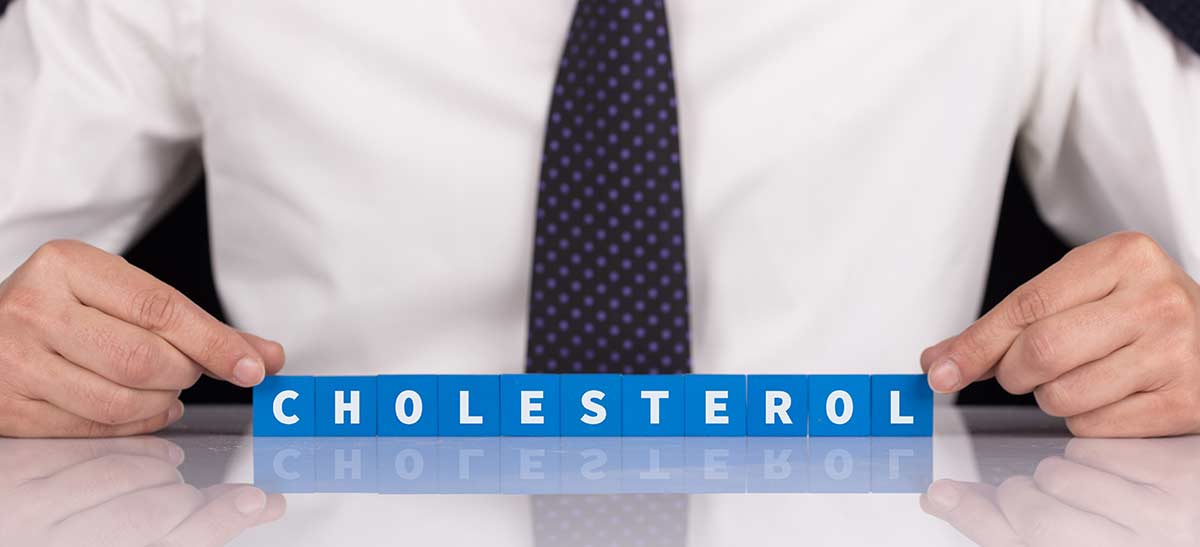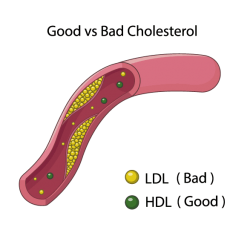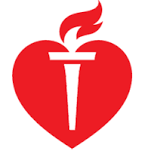
Cholesterol Maintenance
Although most people are aware that cholesterol can lead to heart disease, many are surprised to learn that cholesterol is really a normal element that our bodies create to keep us healthy. So why does cholesterol get such a bad rap? We’ll explain.
What is cholesterol?
Cholesterol is described as a waxy substance that the liver creates and releases though the blood stream. So in and of itself, cholesterol isn’t harmful as the body normally produces and uses it to make hormones, vitamin D, and substances that help with food digestion.
Cholesterol gets its bad reputation because cholesterol is also found in many of the foods we eat such as meat, poultry and full-fat dairy products. Since the body creates enough cholesterol on its own, a poor diet adds excess cholesterol to our systems.
Cholesterol Composition

Cholesterol is stored within a bundle of fat cells called lipids and proteins called lipoproteins. There are several types of lipoproteins but in cholesterol testing, only two are of major significance:
- High density lipoproteins (HDL) are considered “good” cholesterol because they remove cholesterol.
- Low density lipoproteins (LDL) are considered “bad” cholesterol. Too much LDL in the blood stream leads to coronary artery disease.
Triglycerides are another kind of blood fat that raise the chances for a heart attack or stroke. If triglyceride levels are too high, there is a higher chance of developing coronary artery disease.
Dangers of Cholesterol
According to the American Heart Association, There’s a link between high cholesterol and heart disease, stroke, diabetes, and other health problems. Here’s why it’s important to lower cholesterol levels:
- Excess cholesterol taken into the body through unhealthy eating can form a buildup of plaque in the arteries. Over time, the plaque can build up and cause the heart to work harder to pump blood through the cardiovascular system. If an artery that feeds the heart becomes blocked due to plaque buildup, it causes a heart attack.
- A stroke can occur if the plaque buildup breaks open causing blood clots to circulate. If the blood clot circulates and blocks an artery that feeds the brain, it causes a stroke.
In summary, two of the most common dangers of cholesterol are the obstruction of blood flow to the heart and brain.
Staying Healthy
To help you stay healthy, we have dedicated an entire section of our website entitled, Let’s Get Healthy Together. This section of our website is full of healthy recipes, exercises, and encouragement by Dr. Ward and personal fitness trainer, Joel Peterson.
We encourage you to use this section of our website to help you start your healthy lifestyle. As an overview, here are 5 key items that will be helpful lowering your cholesterol and reducing your risk for heart disease:
-
- No smoking: Smoking lowers “good” cholesterol.
- Give your diet a makeover: Eat foods like oatmeal, walnuts, tuna, salmon, sardines, and tofu. Avoid foods that are high in trans and saturated fats.
- Get moving: Even modest amounts of exercise helps reduce the risk of heart disease and lowers triglyceride levels. It also raises your “good” cholesterol.
- Take your medications: Dr. Ward may prescribe some medicine to help lower cholesterol. Make sure to take them as directed and call if you have questions.
- Try supplements: High doses of fish oil or krill oil are good for triglycerides. Fiber lowers triglycerides and cholesterol. Soy protein supplements can lower “bad” cholesterol.
A Message from the AHA
AHA Recommendation
 We recommend that all adults age 20 or older have their cholesterol and other traditional risk factors checked every four to six years, and work with their healthcare providers to determine their risk for cardiovascular disease and stroke.
We recommend that all adults age 20 or older have their cholesterol and other traditional risk factors checked every four to six years, and work with their healthcare providers to determine their risk for cardiovascular disease and stroke.

